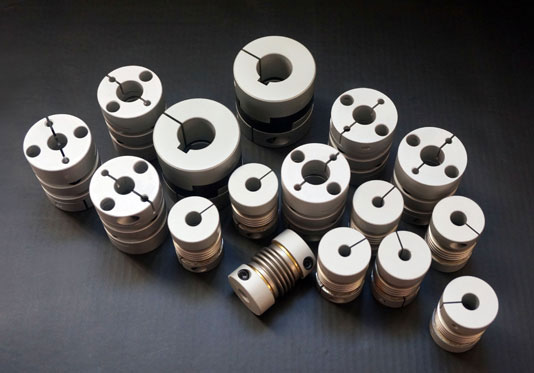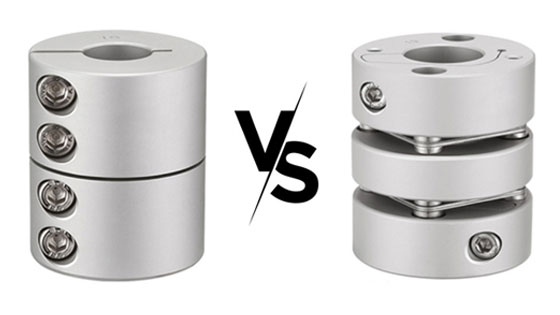The Difference Between Flexible Coupling and Rigid Coupling
Coupling refers to a device that connects two shafts or shafts and rotating parts, rotates together in the process of transmitting motion and power, and does not disengage under normal circumstances. Sometimes it is also used as a safety device to prevent the connected parts from being subjected to excessive load, and plays the role of overload protection. Under normal circumstances, we design and select the coupling according to the principles of easy disassembly, light weight, small size, easy disassembly and installation, and the location as close to the bearing as possible. Couplings are generally divided into rigid couplings and flexible couplings (called elastic couplings when using elastic elements). Rigid couplings are used in places where the two shafts are strictly aligned and there is no relative offset during work. The flexible coupling is more used where the two shafts have relative displacement.

Types of rigid couplings
Rigid couplings are divided into flange couplings, radial key flange couplings, sleeve couplings, jacket couplings and parallel shaft couplings Flange couplings: use bolts to connect the two halves The flange of the shaft coupling realizes the coupling of the two shafts. Radial key flange coupling: the coupling of the two halves of the coupling is connected by radial keys and ordinary bolts. Sleeve Coupling: using a common sleeve Couplings that connect two shafts in a certain way Couplings: Couplings that are clamped in some way to achieve two-shaft coupling using two axially split collets. Parallel shaft couplings: use Coupling in which the intermediate disc passes through the pin to realize the connection of two parallel shafts.
Flexible coupling vs. rigid coupling

Rigid couplings consist of very rigid parts. The elastic coupling contains elastic elements, which not only have the functions of buffering and vibration reduction, but also compensate for the displacement between the axes of the two shafts. The difference between flexible coupling and rigid coupling is as follows:
1. Different characteristics
An flexible coupling is a coupling that can compensate for the axial displacement and radial displacement between the connecting shafts, while a rigid coupling is a coupling that cannot connect the axial displacement and radial displacement between the shafts.
2. The structure is different
Compared with the flexible coupling, the rigid coupling has a relatively simple structure, and the elastic coupling has a relatively complex structure, which is more suitable for the situation where the concentricity of the two shafts is not good, especially for the situation with torsional vibration, because its The elastic structure can have the effect of damping vibration. Rigid coupling is relatively suitable for two shafts with good concentricity, and the price is relatively cheap.
3. Different assembly requirements
The shaft concentricity error of the two shafts of the rigid coupling needs to be within 0.05mm, and a more accurate coaxiality error value is required, while the coaxiality error of the elastic coupling for the two shafts can be within 0.1mm. The distance between the drive shaft and the pump end should be kept 5~10mm.

